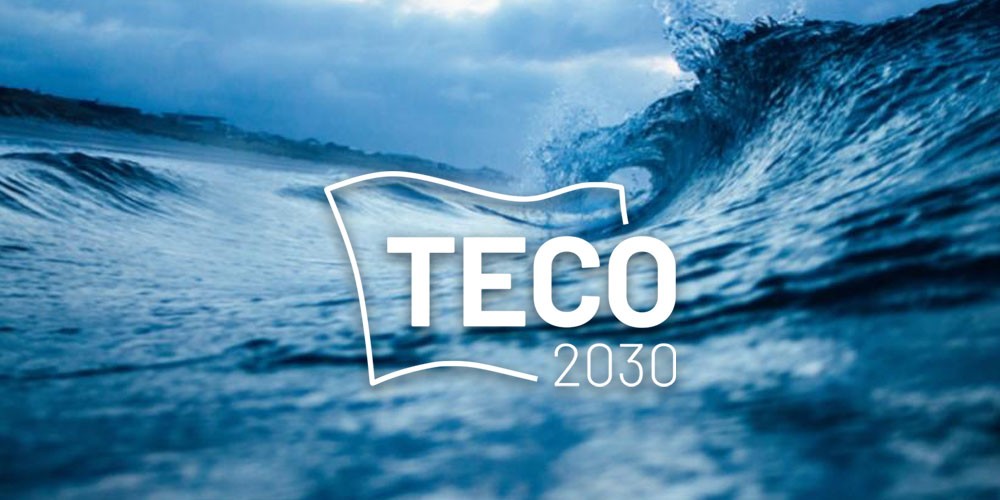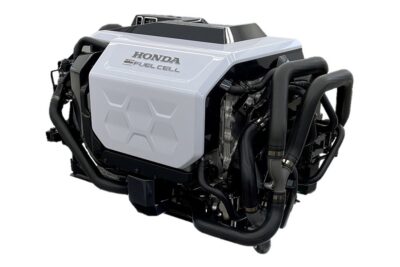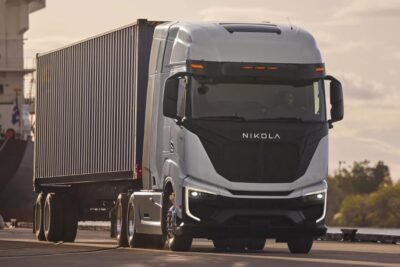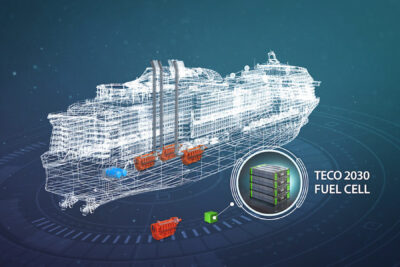Norway plans gigafactory for ship fuel cells
The Norwegian company Teco 2030 is planning Norway’s first “gigafactory” for fuel cells for use in ships. Fuel cells with an output of 1.2 gigawatts per year are to be produced there.
++ This article has been updated. Kindly find all updates below. ++
Teco 2030 is part of the Teco Maritime Group and wants to build the plant in eastern Norway, probably in the counties of Viken, Vestfold or Telemark. The company says it is currently looking at potential sites. The factory is expected to create 500 jobs. Teco 2030 puts the investment requirement at 100 million euros over a period of about ten years.
The development of fuel cells will be done in cooperation with the Austrian engineering firm AVL, which will also contribute to the planning and construction of the factory. Teco 2030 says it will deliver a marine hydrogen solution that is more efficient, compact and durable than fuel cells based on modified vehicle stacks. It plans to start fuel cell production in 2022.
On its website, Teco 2030 claims to have developed a 400 kW maritime fuel cell module. Three of these modules with PEM fuel cells are to be combined into a system with 1.2 megawatts of power. This FC system should then offer a similar response as a diesel unit of the same power, but be significantly smaller.
In addition to AVL, Teco 2030 has already entered into partnerships such as the Austrian electricity company Verbund, the Dutch inland shipping company Chemgas and the Dutch shipyard Thecla Bodewes. To finance the planned factory, Teco 2030 has applied for support under the IPCEI hydrogen programme through the Norwegian state-owned company Enova.
Teco 2030 CEO Tore Enger says that a development centre will also be built alongside the factory. He says that the production capacity of 1.2 GW per year corresponds to an annual turnover of several hundred million euros. “This will be the first mass production of fuel cells in Norway and a hub for the Norwegian hydrogen industry,” Enger says.
Techo 2030 supports the production of green hydrogen, ie not using fossil fuels in the creation of the fuel. The company is a partner in the project Green Hydrogen @ Blue Danube, along with players such as Siemens, Bosch, AVL and Verbund. This project involves generating hydrogen from solar and wind power produced in Romania and transported on barges along the Danube to industrial buyers in Austria and Germany. A nice touch is that TECO 2030 will supply fuel cells for the hydrogen-powered tugboats pushing the barges along the Danube.
This marks a movement in hydrogen and riverway logistics. Another example is where Covestro and the Dutch logistics service provider Netherlands Partikuliere Rheinfahrt-Centrale Coöperatie (NPRC) want to convert the salt transport fleet on the Rhine to hydrogen-powered ships in a joint project as part of the RH2INE initiative.
There has been a lot of movement on the topic of marine fuel cells recently, especially in Nordic countries. In November 2020, the Norwegian shipbuilder Havyard announced its intention to complete the development of its fuel cell system for large ships in 2021; a separate company was founded at that time to market the system. In December, a consortium around the Danish shipping company DFDS applied for funding from the European Union to develop a large hydrogen ferry. The ship with 23 MW propulsion and space for up to 1,800 passengers is to be used between Copenhagen and Oslo from 2027. At the beginning of February 2021, Corvus Energy announced its intention to develop a maritime FC system as part of a Norwegian development community. Unlike Teco 2030, it will be based on modified automotive stacks from Toyota.
These developments have not come out of nowhere but on the back of upcoming global emissions legislation as well as EU and government policies involving the development of the hydrogen economy. In summer of last year, the EU Commission revealed its strategy for energy systems and hydrogen. This was pushed by an impulse from the European Green Deal that highlighted the need to put a price on CO2 emissions in the maritime sector. In the strategy, the Commission sees hydrogen as an alternative low emission fuel for inland waterways and short-sea shipping. For longer-distance and deep-sea shipping, the Commission deems it necessary to scale up fuel cell power “from one to multiple megawatts and using renewable hydrogen for the production of synthetic fuels, methanol or ammonia – with higher energy density.”
The trend towards reduced maritime emissions is accelerated by upcoming global emission legislations. After the EU started preparing legislation for the inclusion of the maritime sector in CO2 limits, the International Maritime Organization (IMO), says it is targeting carbon emission cuts of 40 per cent by 2030 and 70 per cent by 2050, compared to 2008 values. All in all, greenhouse gas emissions are to be reduced by at least 50 per cent by 2050. As the Danube river project illustrates, zero and low emission zones are being proposed for rivers and waterways to reduce emissions to river cities.
Update 10 March 2021: The Norwegian company Teco 2030 has decided on the location for its announced ‘gigafactory’ for fuel cells for use in ships. The choice fell on Narvik in northern Norway, where the factory will be built in the building that previously housed a REC solar cell factory.
A “combined innovation centre and factory” is to be built in Narvik, the company has now announced. Teco-2030 CEO Tore Enger explains that the location is now in northern Norway and not in eastern Norway, as announced a few weeks ago, with the opportunities that have arisen since the announcement. “After it was announced that we were planning a factory in Norway, we received almost 30 serious enquiries about possible locations,” Enger says. “We appreciate the interest and input, but the former REC building is very advanced and is perfect for us. That’s why we chose Narvik.”
Another advantage is that the building is already ready for occupancy, Enger says. The building will not be bought, however, but will be rented “long-term with an option to buy” from the real estate group Kubera.
Work is to begin this year, with the first production planned for 2022. Teco 2030 states that up to 500 jobs could be created. The financing of the investment of about one billion Norwegian kroner (about 100 million euros) is currently being discussed.
With additional reporting by Carrie Hampel & Chris Randall
teco2030.no, teco2030.no (update)





0 Comments